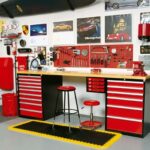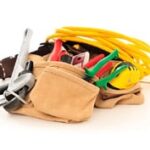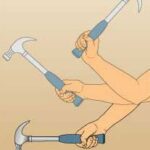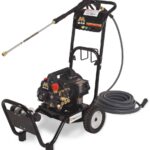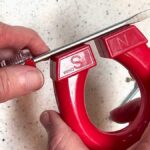When the days are long and the weather is beautiful, I look forward to working in the yard. I figure yard work beats going to the gym because I can burn my energy toward doing something useful.
This past weekend, for example, I decided to cut dead tree limbs into firewood. I doffed my work clothes, carted my chainsaw out of the garage, and began the start-up ritual: check the gas and oil, turn on the switch, set the choke, and yank the starter cord. After about 15 minutes of making adjustments and pulling the cord to no avail, I put the saw away, figuring that I had had my workout.
Can you relate? Do you spend more time looking for the right tool or trying to make it work than you spend on the project itself? When it comes to taking on home projects, nothing beats having the proper tool in good shape and located where you can find it. With this premise in mind, let’s look at a few thoughts and helpful suggestions about tool care and storage.
1Not being able to find a tool can be extremely frustrating. Following the “a place for everything, and everything in its place” premise, it’s helpful to have a storage chest for small tools. You can buy a solid hardwood utility chest, or check out the metal types sold by many home centers. By keeping tools in a tool chest, they’re more likely to stay sharp and in good condition.
2Keep a few frequently used tools in the house. Though most of my tools are in marked drawers at my workbench in the garage, I store a few key household tools in a vinyl tote that resides on a roll-out shelf in our kitchen cabinets. In this tote, I keep a hammer, slip-joint pliers, adjustable wrench, medium- and small-sized Phillips and standard screwdrivers, wire cutters, Swiss Army knife, and an assortment of nails, screws, and fasteners. I’m seriously considering switching to a rolling gate-mouth tool bag that I can keep in a closet to free up the kitchen cabinet space.
3When working on construction, wiring, or plumbing projects where you need several tools and fasteners quickly accessible, wear a tool belt with a tool pouch. You can buy a combination leather belt with pouches or, if you already have a utility belt, just buy a quality leather pouch. As long as you put your tools right back in the pouches after using them, they’re always right at your side.
4If you store metal tools in a garage or a location that is subject to damp air, protect them from rust. I spray my metal tools with WD-40—and wipe off the excess—to keep the rust away and then store them in closed drawers and containers.
5Choose quality over quantity. Instead of buying nine $4 screwdrivers, buy four $9 screwdrivers. The higher the quality of a tool, the better it will perform. You’ll have fewer tools to sort through, store, or lose, and you’ll probably find that you’ll want to take better care of your tools.
6Beware of newfangled miracle tools. Many—if not most—do not do a better job than the tools they’re designed to replace. If one tool is touted to do 16 different jobs, it probably doesn’t do any of them well. These kinds of tools usually gravitate to the back of the tool drawer and just get in the way of finding a more appropriate tool.
7Don’t use broken or dull tools. If a hammer’s head is loose, replace either the handle or the hammer. Don’t use dull blades—the extra force you must apply makes using the tool dangerous (and is more likely to burn out a power tool’s motor). For most cutting, I buy inexpensive power saw blades and throw them out when they become dull. Expensive, quality blades should be professionally sharpened and stored individually when possible.
8Last, but not least, keep your tools in working order. If a tool shows signs of needing to be repaired or tuned up, take it to a repair shop when you first notice the problem. That way, the next time you reach for that tool to handle an emergency repair—or even a weekend project such as cutting tree limbs into firewood—it’s more likely to work. Keep all tools out of children’s reach. Follow manufacturer’s directions implicitly when using power tools, and never leave them plugged in when not using them.



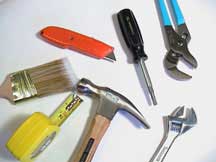

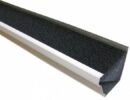
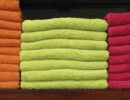
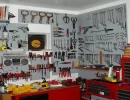
 Don Vandervort writes or edits every article at HomeTips. Don has:
Don Vandervort writes or edits every article at HomeTips. Don has:
